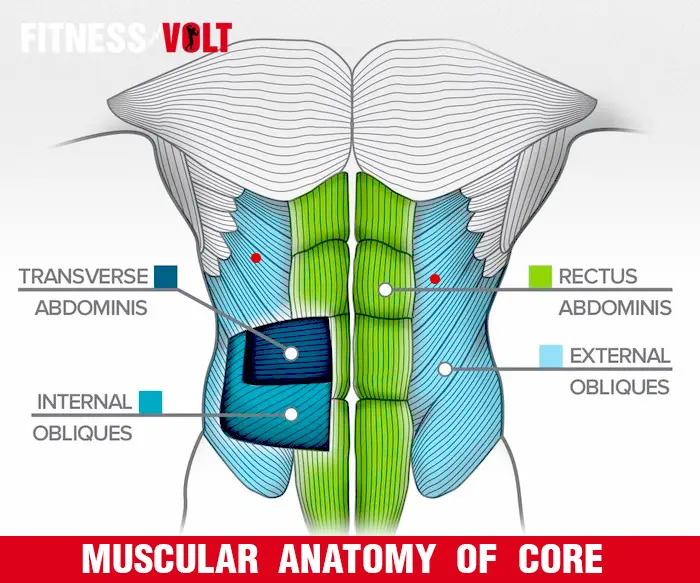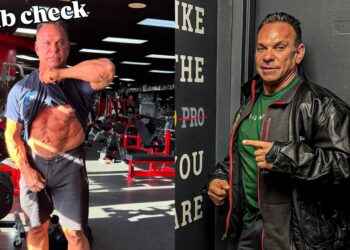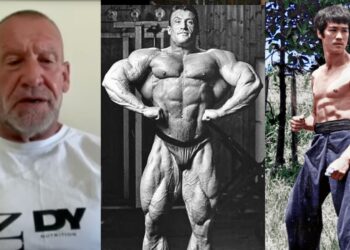I have a confession to make – I don’t enjoy abs training. I find it tedious and unrewarding. While I always include core exercises in my workouts, I do the least amount necessary to keep my midsection in good shape. This usually means 2-3 sets of 1-2 big bang-for-your-buck exercises. I focus on quality and not quantity.
So, no endless sets of sit-ups, crunches, side bends, planks, etc., for me. Instead, I hit my abs hard, heavy, and fast. I’m usually done in ten minutes or less, leaving more time for the exercises that really matter, like deadlifts, pull-ups, and squats.
As a veteran personal trainer, I recognize that not everyone shares my dislike for lengthy core workouts. However, I know plenty of people that do. I also think it’s a mistake to spend more time training your abs than the rest of your body combined. That’s something that a lot of people do, especially in pursuit of a six-pack.
Consequently, I’ve spent the last few years testing and identifying the best core exercises. These movements have allowed me to build a high level of midsection strength without spending a lot of time training my abs.
In this article, I share the only four exercises you need for a strong, hard midsection.
Core Anatomy Basics
Before I share the only four exercises you need for a rock-hard core, let’s take a moment to clarify what the core is and why it’s so important.
Level Up Your Fitness: Join our 💪 strong community in Fitness Volt Newsletter. Get daily inspiration, expert-backed workouts, nutrition tips, the latest in strength sports, and the support you need to reach your goals. Subscribe for free!
Firstly, the core is the collective name for the muscles of your midsection. These muscles encircle your waist like a corset or weightlifting belt to support your lumbar spine. A strong core helps to “bulletproof” your lower back, making it less prone to injury and pain.
Some fitness experts also include additional muscles like the glutes and lats in their core descriptions, but I think that’s just confusing. So, for the purposes of this article, your core is just the central part of your body.
Which muscles make up the core? Good question!
While you don’t need an in-depth knowledge of core anatomy to strengthen your midsection, having a basic understanding of these muscles’ names and functions will make it easier to choose the best exercises for your needs and goals.
The main muscles that make up your core are (1):
Rectus Abdominis
This long, flat muscle is located on the front of your abdomen. It has two sides, which are divided by a line of ligamentous tissue called the linea alba. When both sides contract and shorten, the rectus abdominis pulls your spine forward into flexion. However, when one side contracts and the other relaxes, it assists in pulling your spine sideways into lateral flexion.
The rectus abdominis is your six-pack muscle, which is why so many people want to develop it. However, you’ll only get a six-pack if your body fat percentage is low enough for your abs to be visible. This is typically 10-12% for men and 15-18% for women.
Obliques
Located on the sides of your torso, the obliques are responsible for lateral flexion and rotation of your spine. They also play an important part in stabilizing your spine. There are two sets of oblique muscles – internal and external – but they mostly function together, so there is usually no need to differentiate between them.
Transverse Abdominis
The transverse abdominis, or TVA for short, is a broad, flat muscle that encircles your internal organs. When it contracts, the TVA squeezes inward to create intra-abdominal pressure or IAP.
IAP helps stabilize your spine and reduces the pressure on your intravertebral disks. You engage this muscle when you brace your abs and suck your stomach in, i.e., during an abdominal vacuum.
Erector Spinae
The erector spinae comprise three muscles: iliocostalis, longissimus, and spinalis. Each one affects different regions of the spine (lumbar, thoracic, cervical). The erector spinae runs the length of the spine in two parallel columns. They are responsible for the extension and lateral flexion of your spine and are also critical stabilizers.
Multifidus
As one of your lower back muscles, the multifidus is primarily a spinal stabilizer. However, it also works with your erector spinae, obliques, and rectus abdominis, playing a part in spinal extension, rotation, and lateral flexion.
The core muscles can work dynamically to produce movement or statically to prevent it. As such, you should include static and dynamic exercises in your core workouts.
In addition, if you want to work your core with the least number of exercises, you should pick movements that challenge multiple muscles. Isolation exercises, like crunches, are not very time-efficient.
These 4 Core Exercises Will Sculpt Your Abs Faster
Now you know how your core muscles work, it’s time to challenge and develop them with the only four core exercises you need for a strong, hard midsection.
1. Paloff Press
If I had to choose one core exercise to do for the rest of my life, the Paloff press would be it. Invented by Bostonian physical therapist John Paloff, this exercise targets the entire core, especially the obliques, and TVA.
Level Up Your Fitness: Join our 💪 strong community in Fitness Volt Newsletter. Get daily inspiration, expert-backed workouts, nutrition tips, the latest in strength sports, and the support you need to reach your goals. Subscribe for free!
Pallof presses are an anti-rotation and anti-extension exercise that enhances core stability. Plus, because it’s a weighted exercise, you can make it as easy or hard as necessary, so it’s ideal for all fitness levels. I consider Pallof presses a must-do exercise, and it’s a cornerstone of my core training.
Steps:
- Attach a D-shaped handle to an adjustable cable machine set to about mid-chest height.
- Stand side-on to the machine and hold the handle in front of your chest with both hands.
- Brace your core and square your shoulders and hips.
- Without turning your body, extend your arms and press your hands out in front of you. Notice how your core contracts to stabilize your spine. Hold this position for 2-3 seconds.
- Bring your hands back in, reset your core, and repeat. Continue for the prescribed number of reps.
- Turn around, switch sides, and repeat.
Tips:
- You can also do this exercise in a half-kneeling or tall kneeling position.
- No cable machine? No problem! Use a resistance band
- Experiment with different cable and arm angles to target different regions of your core.
2. Kneeling Barbell Rollout
The biggest problem I see with many core exercises is that they’re too easy for anyone who isn’t a beginner. Take regular planks, for example; if you can hold a plank for more than 60-90 seconds, that exercise is probably too easy to do you much good.
That’s why I’m a massive fan of this second exercise – the barbell rollout. Adding weight means you can make this move as challenging as it needs to be, avoiding the time-wasting and boredom-inducing high-rep trap.
So, forget doing 100s of crunches or five-minute planks – work your core with some heavy iron!
Steps:
- Place your barbell on the floor. Load both sides with the same size weight plates and secure them with safety collars.
- Kneel behind the bar and hold it with a shoulder-width overhand grip.
- Brace your core, flex your spine slightly, and push the barbell into the floor.
- Extend your arms and hips and roll the barbell away from you. Lower your body down to within a few inches of the floor.
- Pull the barbell back into your legs and repeat.
Tips:
- Reduce your range of motion if you feel this exercise in your lower back.
- Do not hyperextend your lumbar spine, as doing so can cause severe injury.
- Increase the weight to make this exercise harder or progress to doing your rollouts from standing:
3. Single-Arm Farmer’s Walk
Many of the biggest bang-for-your-buck core exercises don’t look like core exercises at all. Take the farmer’s walk, for example. Most people do them to strengthen their grip or for conditioning. However, use one arm instead of two, and suddenly, it’s your core that you’ll feel doing most of the work.
The farmer’s walk is a very functional exercise that replicates a challenge that most people face from time to time – carrying a heavy object in one hand, such as a grocery bag or suitcase. Keeping your torso upright not only hammers your entire core but also teaches you how to lift and carry unbalanced loads without hurting your back.
Steps:
- Stand next to a heavy dumbbell or kettlebell. Brace your core and pull your shoulders down and back.
- Squat down, grip the weight firmly, and then stand up straight.
- Making sure your hips and shoulders are level, go for a walk around your training area. Continue for the prescribed distance, time, or number of steps.
- Carefully put the weight down, switch sides, and repeat.
Tips:
- Do not lean toward or away from the weight. Instead, keep your torso upright throughout.
- No space? Just march on the spot.
- You can also do this exercise with a barbell or any other heavy object you can carry with one hand, e.g., a sandbag, bucket of rocks, watercooler jug, etc.
- Raise the weight above your head and do waiter’s walks for a more intense challenge:
4. Hanging Knee Raise
While standard lying leg raises are a good core move for beginners, they usually aren’t challenging enough for more advanced exercisers. Hanging knee raises load your abs with more weight and strengthens your grip and lower traps while stretching your lats. I also find this exercise more lower-back-friendly than the floor version.
Unfortunately, it’s easy to cheat during this exercise, which allows you to do more reps while taking work away from the target muscles. Avoid cheating while making this exercise as effective as possible by following these instructions.
Steps:
- Hang from your pull-up bar with an overhand or neutral grip. Your legs and hips should be straight. Brace your core.
- Posteriorly tilt your pelvis, bend your knees, and curl your knees up toward your chest. Make sure you flex your lower spine.
- Hold this position for 2-3 seconds.
- Lower your legs back down, and then repeat.
Tips:
- Do not swing your legs up. Instead, raise them smoothly and with control.
- Imagine pulling your knees to your chest – don’t just stop when your thighs are parallel to the floor. Treat this exercise like a hanging reverse crunch.
- Perform this exercise with straight legs to make it MUCH more challenging:
Closing Thoughts
When I started working in the fitness industry, one of my first jobs was teaching group exercise classes. In addition to step aerobics, spinning, and circuit training, I also taught 60-minute abs classes.
Needless to say, doing abs for an hour involved a lot of very easy exercises!
While these classes were popular, I don’t think they were very good. After all, if you can train a muscle group for an hour straight, whatever you are doing is probably not hard enough to have much of an effect.
Nowadays, my core workouts take a maximum of ten minutes but produce much better results than those old abs classes. I focus more on exercise quality instead of mindlessly pumping out hundreds of crunches, sit-ups, and leg raises.
So, don’t feel that marathon core workouts are the only way to strengthen your abs. In fact, all you need is a few intense sets of a couple of hardcore movements to build the midsection of your dreams. And remember – six-packs are built in the kitchen as much as the gym!
So, what are your favorite must-do core exercises? Let me know in the comments section below.
References:
- Oliva-Lozano JM, Muyor JM. Core Muscle Activity During Physical Fitness Exercises: A Systematic Review. Int J Environ Res Public Health. 2020 Jun 16;17(12):4306. doi: 10.3390/ijerph17124306. PMID: 32560185; PMCID: PMC7345922.









